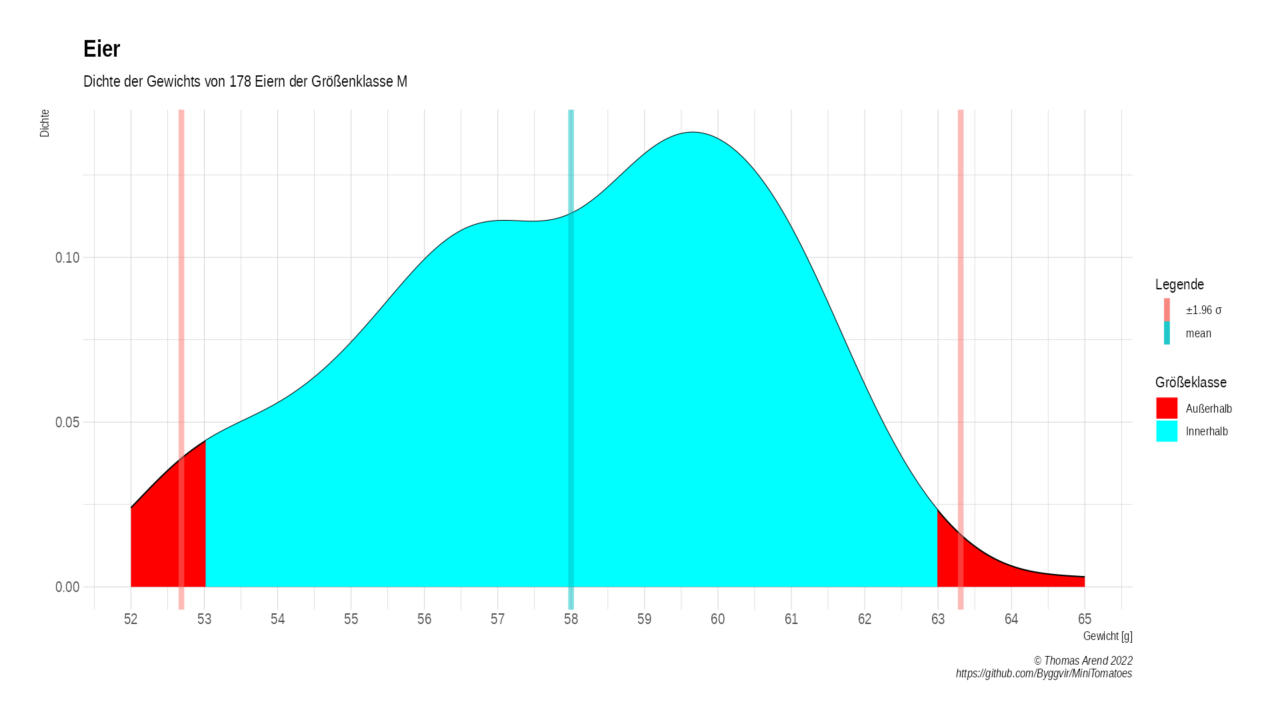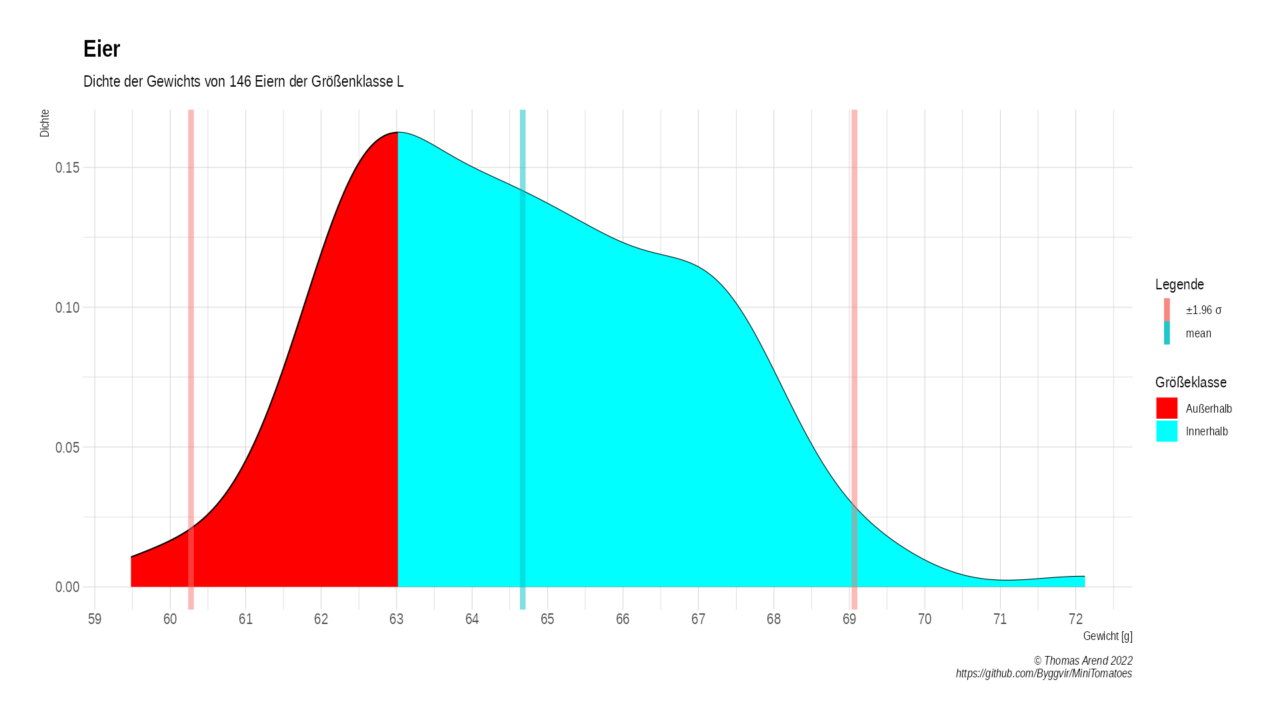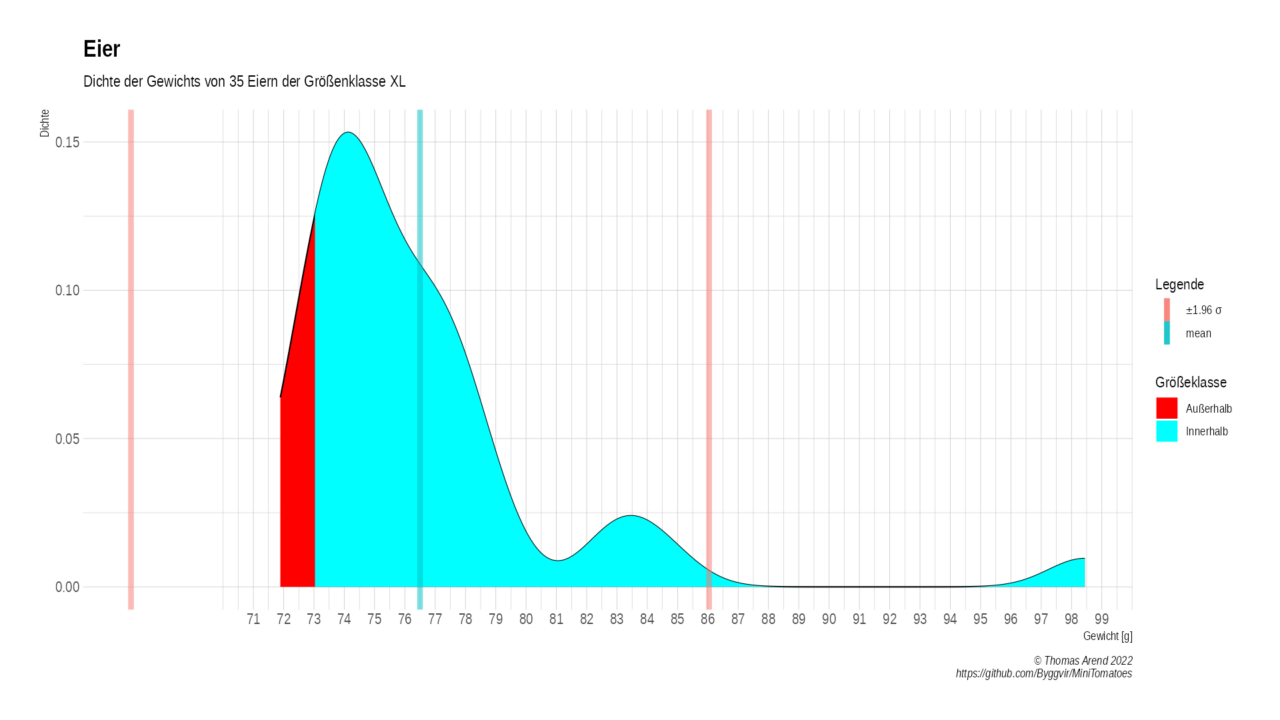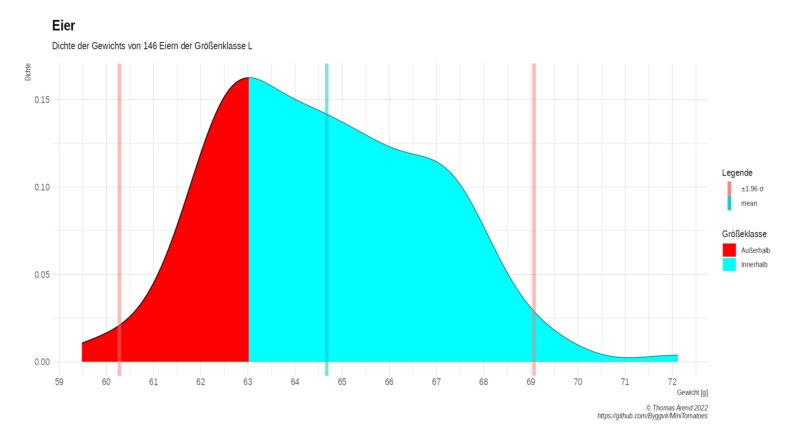An Analysis of Egg Size Variability
Thomas Arend
Introduction
Chicken eggs are a common staple in many diets and are used in a variety of recipes. Despite their widespread use, there is often variability in the size of chicken eggs within a single carton or batch. In this study, we aim to examine the variability in the size of eggs and identify factors that may contribute to these differences.
Chicken eggs are offered in the size classes S, M, L and XL. The main focus is on the two size classes M and L.
The size classes are defined as follows:
- XL: 73 grams and more.
- Large: 63 to under 73 grams.
- Medium: 53 to under 63 grams.
- Small: under 53 grams
Methods
- Sample collection: A sample of eggs was collected from a local grocery store. The sample consisted of 178 eggs classified as size M, 146 eggs size L and 35 eggs size XL.
- Data collection: The weight of the eggs was measured with a scale accurate to 0.01 grams. The measurements were taken in grams.
- Data analysis: The collected data was analyzed to determine the average weight of the eggs and to calculate the standard deviation, which indicates the variability in the egg weights.
Results
- Average weight of eggs: The average weight of the eggs was 58.00 grams for eggs size M, 64.67 grams for eggs size L and 76.50 grams for eggs size XL.
- The average weight of size M eggs is equal to the middle of the size class 58 grams. p-value = 0.9929.
- The true mean of size L eggs is below the middle of the size class L, 68 grams, (p-value = 2.2e-16) .
- Standard deviation: The standard deviation of the egg weights was 2.24 grams for size M, 2.71 grams for size L and 4.87 grams for size XL.
- 8 eggs size M, 41 eggs size L, 3 eggs size XL didn’t met the minimum weight for their size class.
- Two eggs size M were heavier than the maximum weight of their class. One egg size XL weighted 98.44 gram.
- All but nine of the eggs in the size class L were in the lower half of their size class.
- The average weight of class L and XL eggs is not much higher than the minimum weight requirement.
Limitations
The number of size XL eggs was very low. Now eggs S are included.
Discussion
The results of this study indicate that there is low variability in the size of eggs within a single carton or batch. Class L eggs weigh less on average than the breadth of the size class suggests. This variability can impact the outcome of recipes and may lead to differences in cooking time and results.
Further research is needed to identify the factors that contribute to this variability, such as age of the eggs, the conditions under which the eggs are produced and stored, and the source of the eggs.
Conclusions
This study highlights the importance of carefully measuring the size of eggs when cooking and baking. It also underscores the need for further research to understand the factors that contribute to the variability in egg size and to identify ways to minimize this variability.
Diagrams





Neueste Kommentare